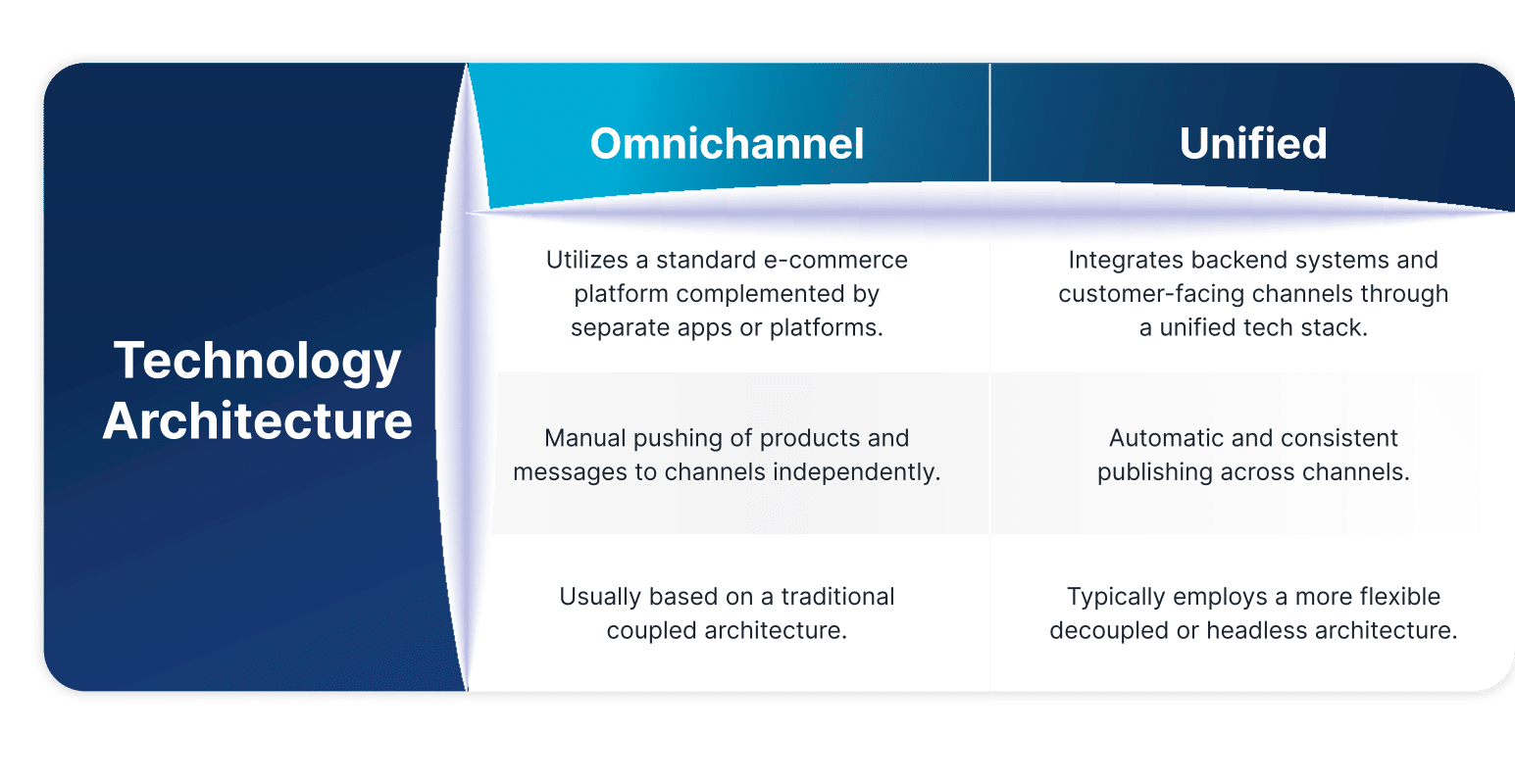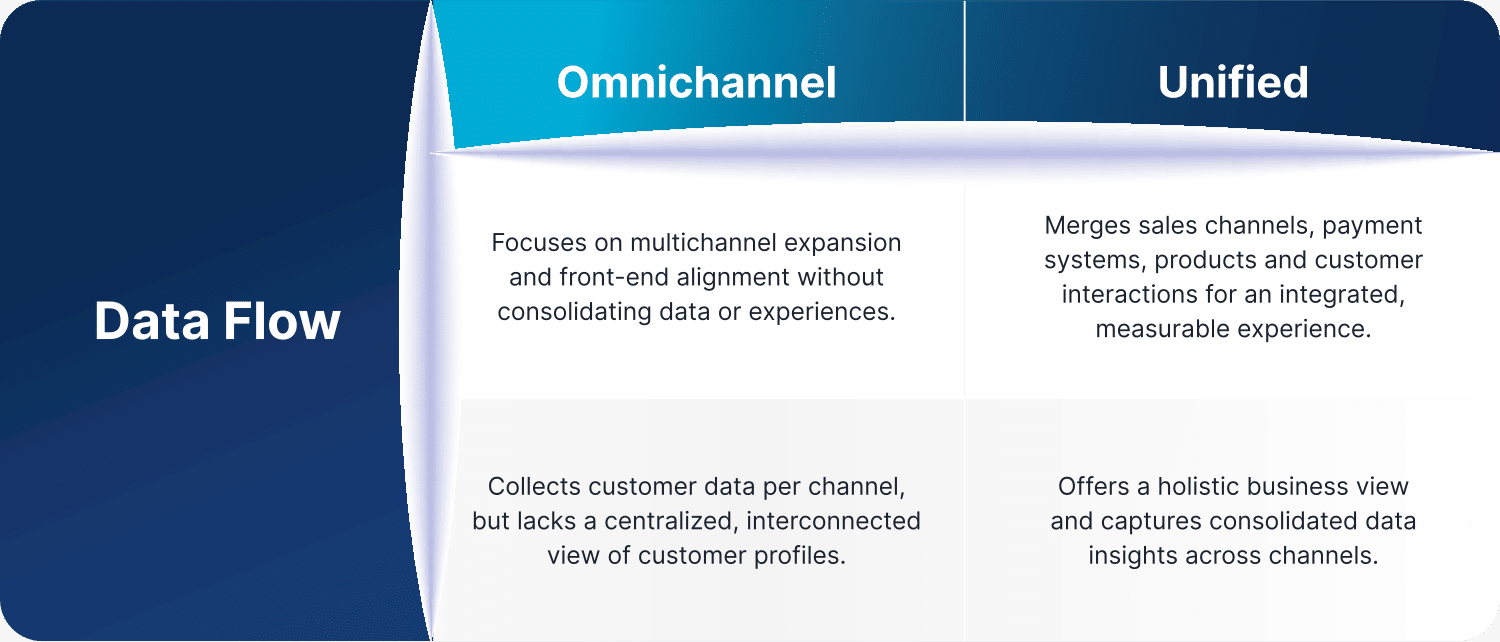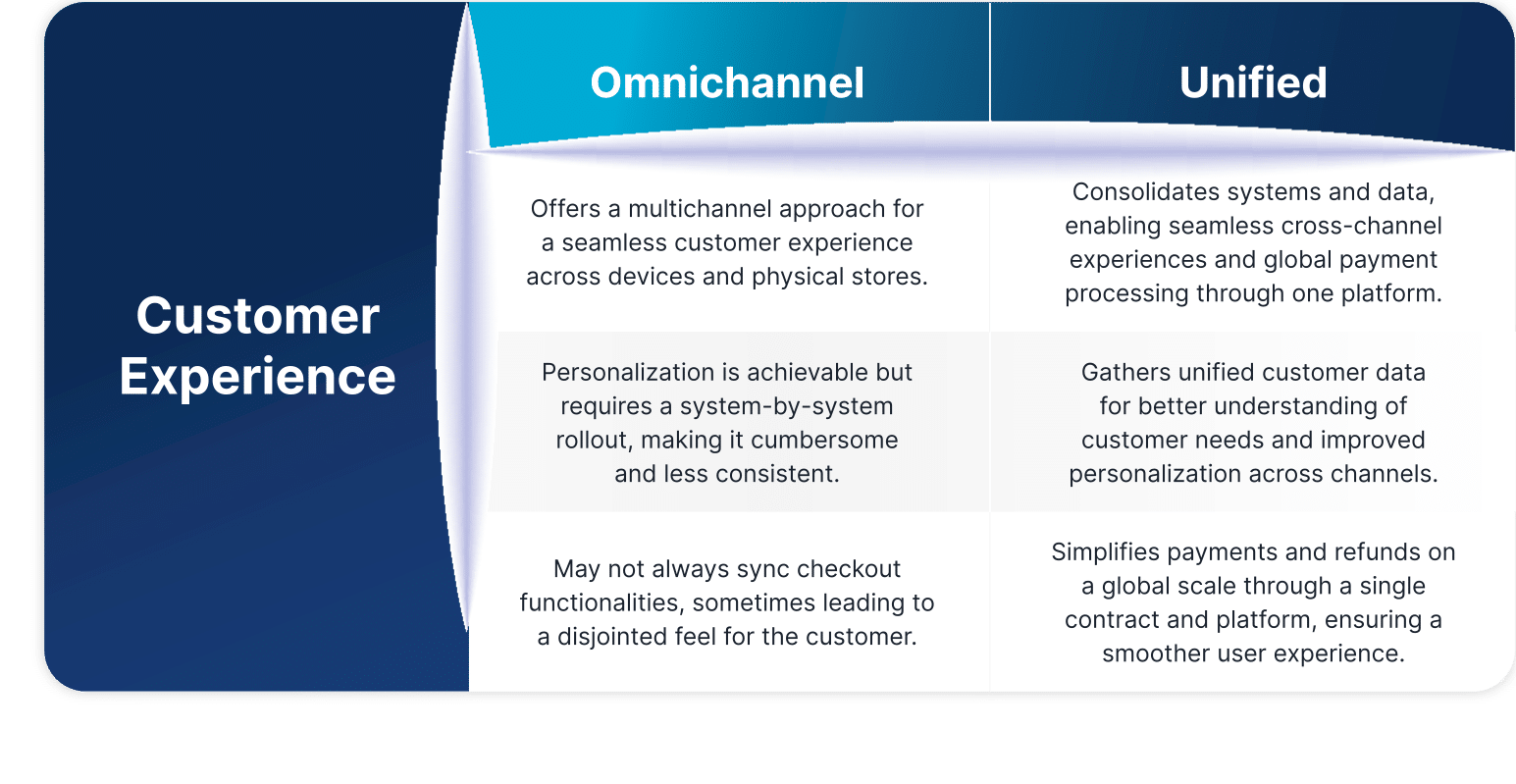Omnichannel retail and unified commerce strategies are swiftly gaining prominence as customer expectations for seamless brand and shopping experiences continue to grow. Today’s consumers value not only the product, but also the service they receive, from browsing and buying to delivery and after-sales support. Businesses that adapt by leveraging these strategies are positioned to offer a comprehensive customer experience that bridges the gap between physical and digital touchpoints, cultivating customer loyalty and driving revenue growth.
In this article, we examine the intricacies of omnichannel and unified commerce strategies, present the distinctions between the two and highlight the pivotal role that orchestration and last mile delivery play in optimizing the retail experience.
What Is Omnichannel Retail?
Omnichannel retail is an integrated sales and fulfillment strategy that aims to provide a seamless customer experience across multiple channels. Whether a customer is shopping online from a mobile device, laptop or in a brick-and-mortar store, the experience is consistent and interconnected. Omnichannel fulfillment ensures that customers can effortlessly make purchases, receive orders and return products through various platforms including online stores, physical locations, social media and mobile apps.
An omnichannel approach is crucial in the evolving retail environment. Customers’ shopping journeys are increasingly complex and are rarely confined to a single channel. By providing a cohesive and consistent experience, retailers can meet the demand for flexibility, convenience and personalization. This enhances customer satisfaction and loyalty while giving retailers a competitive advantage through improved operational efficiency, reduced costs and increased sales.
What Is Unified Commerce?
Unified commerce is an evolved retail strategy that involves connecting backend systems with customer-facing channels through a single, cohesive platform. This integration allows for real-time exchange of product, inventory, order and customer data across all sales channels, creating a unified view of shopper interactions and ensuring consistency in customer experiences.
Technologically speaking, unified commerce is not about a singular solution; but rather, a streamlined stack of technology working in unison. By consolidating channels to a central platform, unified commerce enables marketers to create more customer-centric shopping experiences and logistics teams to plan accurate procurement and distribution strategies. This integration proves instrumental in offering seamless customer experiences, regardless of the journey taken to make a purchase, by maintaining transparency and accuracy across touchpoints.
Omnichannel Retail vs. Unified Commerce: What’s the Difference?
In today’s bustling retail market omnichannel and unified commerce are often mentioned in the same breath. At a glance, omnichannel weaves together various digital and physical channels to create a seamless customer experience. Unified commerce, however, takes it a step further by ensuring that not only are these channels connected, but also that systems communicate and data flows freely, avoiding the traps of data silos and inefficiencies. The crux is that while omnichannel creates bridges between channels, unified commerce fortifies these connections and streamlines them through a centralized platform. This level of integration is crucial for retailers to seamlessly engage customers across channels and gain a single source of truth.
The table below highlights some of the key differences between omnichannel retail and unified commerce.



Benefits of Unified Commerce: Elevating Retail
Unified commerce moves beyond connecting channels, to merging every aspect of a retail business in a centralized platform. This ensures efficiency, accuracy and a stellar customer experience. Let’s explore some key benefits of a unified commerce strategy.
Streamlined Inventory Management
Unified commerce offers cross-channel visibility of inventory counts, helping companies improve product distribution strategies. This reduces costs related to inventory management and helps optimize last mile delivery and fulfillment processes.
Increased Sales
Unified commerce simplifies the buying process across various channels, making it easy for customers to purchase, receive and return items in whatever channel best suits their needs. What’s more, by capturing the customer experience from start to finish across channels, companies can leverage data to improve marketing and promotional campaigns, further increasing sales.
Accurate Forecasting
With highly accurate, comprehensive data at hand, companies can make better predictions regarding customer behavior. This leads to the design of more effective promotions, sales and revenue-generating initiatives based on consolidated data insights, as well as improvements in upstream processes in procurement and distribution.
Reduced Errors
Unlike omnichannel systems, which are often disparate and disconnected, unified commerce connects the entire ecosystem into a single source of truth through technology integrations. This strategy significantly reduces errors and associated costs while enhancing operational efficiency.
Automated Processes
Unified commerce eliminates the need for time-consuming manual management by centralizing and automating critical business processes. This improves employee productivity and allows staff to focus on more valuable tasks that contribute to revenue generation and improve the customer experience.
Enhanced Customer Experience
Customer-centricity is paramount. Unified commerce enables a seamless and personalized shopping experience across all channels. By unifying data and channels on a single platform, customers have the flexibility and ease to engage with the brand as they prefer.
The adoption of a unified commerce strategy positions businesses to excel in a highly competitive retail market. It caters to the evolving demands of customers, ensures operational efficiency and unlocks avenues for growth and innovation.
The Role of Orchestration in Omnichannel and Unified Commerce
Orchestration in the retail context refers to the strategic coordination and integration of various components within a business — including inventory management, order fulfillment, last mile delivery and customer service — to deliver a seamless customer experience. It is an essential element in both omnichannel and unified commerce strategies, ensuring that all the moving parts of the retail business work in harmony.
In omnichannel retail, orchestration plays a vital role in unifying the customer experience across different channels, which can often operate in silos. This involves ensuring that inventory is updated in real-time across all platforms, customer service is consistent, and branding and messaging are aligned. However, the multichannel nature of omnichannel retail can make this orchestration challenging, as it requires integrating data and processes across several disparate systems.
On the other hand, unified commerce leverages a single integrated platform to achieve orchestration. This not only streamlines the various processes involved in retail, but also ensures that data is centralized. As a result, unified commerce facilitates a more seamless and efficient form of orchestration, reducing errors and increasing operational efficiency. With all data and processes under one roof, it’s easier to keep a pulse on inventory levels, customer preferences and other critical aspects of the business, which in turn, leads to an improved customer experience.
Last Mile Delivery Excellence: The Key to Omnichannel and Unified Commerce
Customer expectations now extend beyond product quality — they demand exceptional service and a truly seamless purchasing journey. Last mile delivery is a critical element of meeting these expectations, particularly in regard to omnichannel retail and unified commerce. The ability to effectively orchestrate and optimize last mile logistics is indispensable for delivering products in a fast, reliable and cost-effective manner. It’s not merely about transportation; it also encompasses a comprehensive approach to logistics, taking into account routing, courier selection and evolving data-informed strategies.
Last mile orchestration solutions further support modern retail strategies, helping to control costs with automations that eliminate tedious manual tasks and improve operational efficiencies in fulfillment and delivery. Retailers should leverage automation technology with functionality to improve last mile delivery through several avenues.
Optimized Carrier Selection
Advanced automated rate shopping tools enable quick price comparison across all available modes of transport. This ensures the selection of the best-fit carrier at the best price for every shipment, without the need for time-consuming manual communication with carriers.
Delivery Order Automation
Automating the process of tendering and dispatching delivery orders eliminates the need for manual intervention. This saves significant time between purchase and fulfillment and allows logistics teams to concentrate on more strategic, revenue-generating tasks.
Enhanced Visibility
Automated real-time delivery tracking ensures that couriers are on track and provides dynamic ETAs to reflect any potential changes or delays. This transparency keeps both retailers and customers informed every step of the way.
Proactive Exceptions Management
When a shipment is at risk of not meeting its delivery target, automation can trigger rapid escalation and exceptions management. This proactive approach resolves issues before they turn into missed deliveries and dissatisfied customers, effectively safeguarding the customer experience.
Unlocking Excellence with OneRail: Your Partner in Omnichannel and Unified Commerce Orchestration
Customer satisfaction, brand credibility and business growth are crucial factors that hinge on performance. Excellence in omnichannel and unified commerce orchestration, coupled with last mile delivery, is non-negotiable. In an ever-competitive market, embracing cutting-edge solutions that employ technology to master last mile logistics and create flawless customer experiences is imperative.
OneRail’s comprehensive orchestration solution addresses the challenges of both omnichannel and unified commerce. With a host of powerful automation capabilities and data-rich features, OneRail equips businesses with the tools they need to refine processes, reduce costs and exceed customer expectations.
Elevate your business to new heights of last mile delivery excellence and omnichannel and unified commerce orchestration — book a demo with OneRail today.


